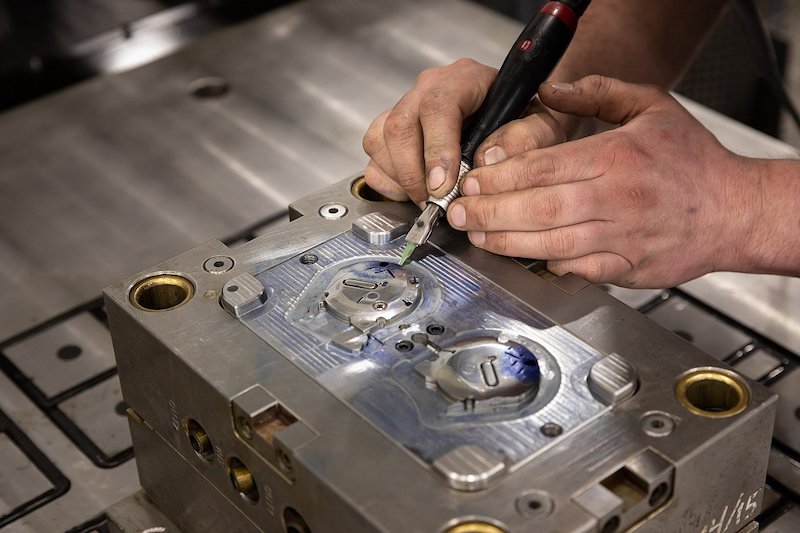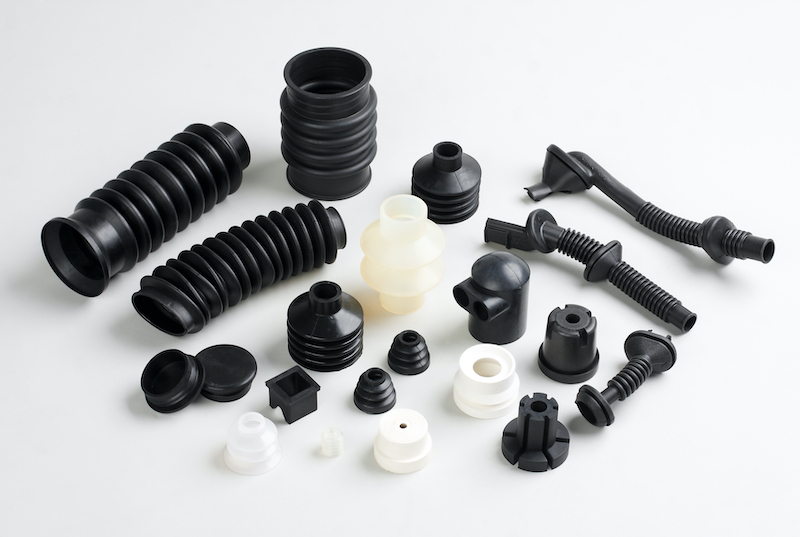Threaded parts are common in products we see daily, such as bottle caps. Making these threaded molds requires you to follow the specific design guidelines to avoid any mistakes during production. It can also be challenging for manufacturers to make specific threaded mold designs.
Challenges in Creating Molded Threaded Parts
Both creating internal and external threaded parts with injection molding carry their challenges and difficulties. Here are some challenges to keep in mind when creating injection molding mold parts:
• Delicate Thread Characteristics
Unlike regular-type solid molded parts, threaded parts have more delicate characteristics. The threads have tiny measurements, yet you must keep them intact when you make them. You must create precise and accurate thread measurements for the molded parts if you want them to work well as intended. The delicate thread characteristics require you to work on producing the threaded parts with more caution.
• Difficulty in Removing the Threaded Parts from the Mold
The delicate elements of the threaded parts will also require you to remove them cautiously after completing the injection molding operations. The abrupt removal process of the threaded parts can damage the threaded area and set your production to fail. Also, it's best to ensure the complete solidification of the injection molding thread parts before ejecting them from the mold.

• Gate Location for the Threaded Parts
Creating the most excellent threaded parts in molding operations will have everything to do with the gate location. Choose the gate location that won't hinder the aesthetics and function of the threaded parts. Ensure that the gate location won't potentially damage the molded component during the molding operations.
• Damaged Threads During Molding Operations
During the molding operations, the threaded parts you make might get cracked or damaged, which renders them useless. Even a tiny crack around the threaded component can lead to more sizable damages when you fasten it. The molded threads will be prone to cracking if you can't manage the speed and movements of the molding tools during low volume manufacturing and mass production.
Design Tips and Guidelines for Creating Optimal Molded Thread Parts
Let's get things straight. Creating molded thread parts is not easy. With limitations in injection molding, you need to design your threaded parts with the best plan and calculation. Here are some design tips and guidelines for creating optimal molded thread parts:
• Avoid Sharp Corners
Sharp corners are a no-no for the molded threaded parts. It's not a good idea for the component, and it's not good for the end-user. Sharp corners can also damage the threaded area during regular use, which can be problematic. So, remove every sharp corner from your threaded part design before they cause any problems during real-world applications.
• Keep Consistent Wall Thicknesses on Threaded Parts
The consistency of wall thickness is essential for threaded parts. Inconsistency of wall thickness can lead to cracking and damage during production or usage operations. With a consistent wall thickness, you can ensure the consistent durability of the threads and other component areas to ensure smooth usage.
• Don't Use Counter-Rotating Threads
You should build threads that rotate in the same direction. It is much more straightforward to mold this type of thread. Meanwhile, using a counter-rotating thread design will only complicate the molding process. You will also risk breaking the thread structure during ejection.
• Consider the Thread Size
The size of the thread also matters most in your design. Smaller thread sizes will make it more complicated to mold and risk damage during ejection. A bigger thread size will be a better choice to keep a smooth production run. A bigger thread size will also be easier to mold and safer to remove from the mold cavity. It also has a more practical use.
• Position the Draft Angles in the Best Way
The draft angle position can make or break your threaded parts. Wrong draft angles can complicate the removal of the threaded parts from the mold cavity. Ideally, you should set the draft angle to more than 1 degree in your design. You can make the removal process much easier when you configure it this way.
• Keep Reasonable Parting Lines on Threaded Parts
Parting lines are a vital part of the molded threads you produce. Creating an equal parting line for both sides of the molded thread body is always the best practice for the best results. It gives better support for the molded thread and a better production process for the parts.
• Insert Molding is Best for Internal Threaded Parts
Creating internal threaded parts can be tricky. Using the insert molding method can make everything more straightforward to do. Production for internal threads will go much smoother with insert molding. Also, you can remove the threaded parts with minimal risk of breaking the internal thread mold.
Avoiding Mistakes in Your Molded Threaded Parts Design
The design mistakes for your threaded molds can lead to many problems during production or usage scenarios. Here are mistakes to avoid in your threaded mold part design:

• The Wall Thickness is Too Thin
Molded threads need to maintain their durability during use. Otherwise, you will see cracking and non-functioning thread resulting from everyday wear and tear. Applying a wall thickness that is too thin will only minimize its durability factor. It also makes your threaded mold even more vulnerable to damage.
• Too Many Undercuts
With threaded molds, you can still use undercuts here and there to accommodate your custom thread design. However, too many undercuts can lead to too many problems during the usage application of the threaded mold. Always minimize the use of undercuts and only use them when necessary.
• Lower Quality Plastics
You should choose higher-quality plastic materials for the threaded mold. It can bring you the best result, reliability, and durability for the threaded parts you make. Higher-quality plastics will also be easier to mold than lower-quality ones.
• Bad Gate Location on Threaded Parts
The gate location you put around the threaded mold will help you succeed in the molding operation. However, the wrong placement of the gate location will only hinder your production process. It can also create defects around your threaded molds.
Conclusion
Applying the optimal design guidelines for threaded molds can help you get the best quality threaded parts for various industrial applications. Injection molding has limitations for creating internal and external threads. By following the design guidelines, you can avoid making mistakes during your threaded mold creation.
Besides from injection molding, TEAM MFG also offers rapid prototyping, CNC machining, and die casting to meet your projects needs. Contact us today!





















